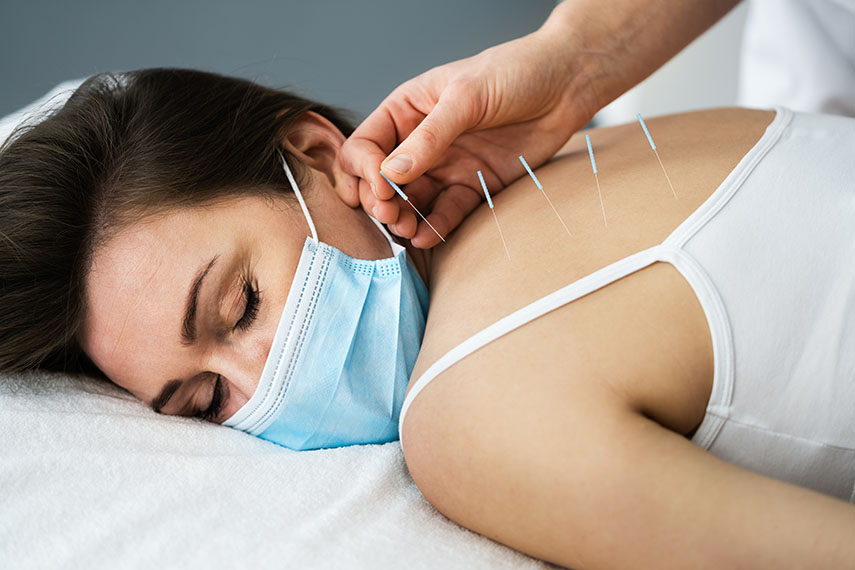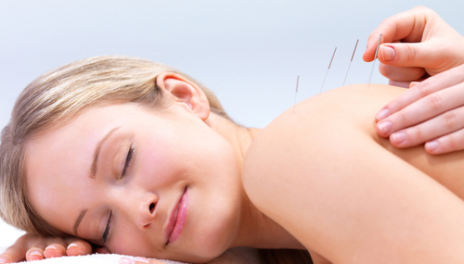Your Top 6 Dry Needling Questions Answered
Dry needling is a technique that is fast gaining appreciation within the physiotherapy world, with many practitioners throughout Australia now trained in the use of acupuncture needles to assist with their client’s pain and rehabilitation. I found myself interested in dry needling and its application from an early stage in my physiotherapy career, and have undertaken dry needling courses and have also undertaken formal postgraduate training in musculoskeletal acupuncture.
In this blog article I wanted to answer common questions about dry needling, including:
1. What is dry needling?
2. What is the difference between acupuncture and dry needling?
3. How does dry needling work?
4. What will I feel during my dry needling session?
5. Is dry needling safe?
6. Where does dry needling fit into my rehabilitation plan?
So…
1. What is dry needling?
Dry needling, sometimes referred to as ‘clinical or Western acupuncture,’ is an invasive method whereby solid filament (acupuncture) needles are introduced into the skin and tissues below, with the term ‘dry needling’ coined to differentiate it from ‘injection needling’ where something is injected into tissue with a hyperdermic syringe.
Dry needling is a unique procedure intended to specifically target and restore muscle function, with an emphasis on improving tissue healing and restoring normal tissue function. This is important as continued activity with poor muscle function may lead to further tissue damage and increased pain. Dry needling is not meant to replace conventional medical procedures such as physiotherapy or surgery. However, when combined with conventional treatment options, dry needling can be an influential method to accelerate pain reduction, healing and the restoration of normal tissue function.
The exact mechanisms of dry needling are complex and not fully known. However, there is a growing body of scientific evidence that supports the positive effect inserting a needle has on the electrical and chemical communications that take place in our nervous system. These include inhibiting the transmission of pain signals in our spinal cord and increasing the release of our own pain relieving chemicals within our brains. The pain relieving effect of dry needling is gaining strong support in mainstream Western medicine, with public hospital systems now directly funding its use.
2. What is the difference between acupuncture and dry needling?
 There are obvious similarities between dry needling and acupuncture in that the needles used are identical. Generally dry needling is based on Western anatomical and neurophysiological principles, which are not to be confused with the Traditional Chinese Medicine (TCM) technique of acupuncture.
There are obvious similarities between dry needling and acupuncture in that the needles used are identical. Generally dry needling is based on Western anatomical and neurophysiological principles, which are not to be confused with the Traditional Chinese Medicine (TCM) technique of acupuncture.
TCM is based on the use of “pulses,” “coatings” and “meridians” (or channels) derived from ancient Chinese philosophy and culture, with traditional acupuncture needles inserted into defined acupoints, intended to unblock energy meridians and help create balance within bodily systems. Advocates of traditional acupuncture promote its use for treating a range of physical and psychological problems.
Unlike the specific tissue targets used in dry needling, acupoints do not necessarily match our understanding of anatomy and the proposed treatment mechanism is largely inconsistent with modern medical science.
Modern dry needling is based on current medical science and research known and accepted by today’s primary care, orthopaedic, neurologic and pain management physicians. However, the positive effect on pain of inserting a needle is likely to be similar, whether administered as part of a dry needling or acupuncture treatment.
3. How does dry needling acupuncture work?
As I mentioned previously, the exact mechanisms of dry needling are complex and not fully known. However, there is a growing body of scientific evidence that supports the positive effect inserting a needle has on the electrical and chemical communications that take place in our nervous system. These include inhibiting the transmission of pain signals in our spinal cord and increasing the release of our own pain relieving chemicals within our brains.
Dry needling uses a very fine, solid filament needle to cause a small, precise injury or “lesion” in the tissue when it enters the body. The tiny needle induces injury signals the brain uses to initiate a sequence of events to replace or repair the damaged tissue with new, healthy tissue. Needling in a painful ‘trigger point’ or muscular knot frequently provokes a “twitch” response from the muscle. This is both diagnostic as well as therapeutic, because healthy muscle tissue will not “twitch” when stimulated by the needle. Once a “twitch” response has been elicited, the muscle fibers in that area relax, ‘inflammation’ is reduced and circulation improves. As a result of these physiologic processes, dry needling can purposely address muscle, tendon and myofascial pain and dysfunction.
Personally, I feel dry needling has a complex effect on the body’s fascial make-up: with fascia being the connective tissue that surrounds muscles and joints, and keeps everything together. Originally fascia was thought to be an innate substance with minimal neural input/output, but on-going research has found that fascia is a highly innervated tissue (lots of nerves), and therefore would have a strong response to a slightly invasive treatment technique – such as dry needling.
 Papers written by Helene Langevin propose that the root effect of acupuncture/dry needling could be through its effect on connective tissue. Read this excellent article by Helen about dry needling. You’ll find links to some more great information about dry needling.
Papers written by Helene Langevin propose that the root effect of acupuncture/dry needling could be through its effect on connective tissue. Read this excellent article by Helen about dry needling. You’ll find links to some more great information about dry needling.
A lot of the literature focuses on ‘trigger points’, and dry needling’s effect on these, but unfortunately there is not really a general consensus on what a trigger point is! Some well established theories on the effect of needling trigger points include:
Theory A
1. Something causes pain, if it happens often enough or if the trauma is great enough, the pain signal may return and activate special pain receptors, which will feedback to the spinal cord. This will cause pain to continue instead of fade and is called a ‘Reflex Arc’.
2. At the same time motor neurones may become stuck in a feedback loop/reflex arc, facilitating muscle spasm. In some cases the reflex arc continues for years, even decades.
3. Introducing a new stimulus (i.e. the needle) impedes the reflex arc and has the effect of relaxing the muscle.
Theory B
1. A muscle in constant spasm becomes a damaged muscle. Spasm reduces blood flow in the muscle. This means less oxygen and nutrients to the muscle. Muscle fibres die off and get replaced by fibrous scar tissue. This in turn holds the muscle tense, prevents muscle metabolites from leaving the muscle and causes continued spasm and pain.
2. Putting a needle into an active trigger point within the muscle causes the muscle to relax; this can be seen with an electromyogram (EMG).
4. What will I feel during my dry needling session?
Generally, needle insertion is not felt; the local twitch response or sudden slight contraction of the muscle may provoke a very brief pain response. This has been described as an electric shock or a cramping sensation. A therapeutic response occurs with the elicitation of local twitch responses and that is a good and desirable reaction.
During treatment, and depending on the dry needling technique used, patients commonly experience heaviness in the limbs or a pleasant feeling or relaxation. Following this technique some muscle soreness may be felt up to 24-48 hrs. The application of heat or ice depending of the needling site and drinking plenty of fluids usually reduces the soreness.
5. Is dry needling safe?
 Dry needling is a very safe treatment. In the clinic we are trained in using a ‘clean’ technique, and only individually packaged, single use, sterile needles are used. The needles are very fine (.16-.30mm), and very rarely does any bleeding or bruising occur at the insertion site.
Dry needling is a very safe treatment. In the clinic we are trained in using a ‘clean’ technique, and only individually packaged, single use, sterile needles are used. The needles are very fine (.16-.30mm), and very rarely does any bleeding or bruising occur at the insertion site.
Many clients report some soreness in the treated area and referral zone lasting from a few hours to two days. Side effects are very rare but when they occur, the most frequent and the most serious is that of a pneumothorax. This is where a needle pierces the lung leading to a full or partial collapse. This happens mostly when a needle is inserted into the Trapezius muscle in a certain way and too deeply – generally due to poor practitioner technique. Many physiotherapists will not dry needle muscles of the thorax that may be deep and close to the inflated lung, but most physios have a deep understanding of the relevant anatomy and dry needling technique so the practice is very safe.
6. Where does dry needling fit into my rehabilitation plan?
Dry needling is the modality of choice when it comes to treating acute injuries, muscle spasms or muscle pattern imbalances. It is very common to initiate dry needling at the beginning of your treatment program in order to break the pain cycle. Once that is achieved, other treatment options are introduced.
Typically, it takes several visits for a positive reaction to take place, as the needling is looking to cause mechanical and biochemical changes without any pharmacological means. Therefore, we are looking for a cumulative response to achieve a certain threshold after which the pain cycle is disturbed.
While dry needling can be very useful in relieving pain it does not necessarily address the source of the pain. For example, someone with advanced osteoarthritis of the hip or knee may have associated secondary muscular pain as the muscles compensate to avoid movement related with pain. Dry needling can be valuable in relieving the pain but it will not reverse the osteoarthritic alterations in the hip that are the source of the muscular pain.
The benefits of Dry Needling frequently include more than just relief from a particular condition. Many people find that it can also lead to increased energy levels, better appetite and sleep as well as an enhanced sense of overall wellbeing.
See this video from the Hawthorn Hawkes of a player undertaking a dry needling session with their physiotherapist.
References:
White A. Western medical acupuncture: a definition. Acupunct Med. 2009; 27(1): 33-35
Pyne D, Shenker NG. Demystifying acupuncture. Rheumatol. 2008; 47: 1132-1136
Comments Closed
Sorry we missed you! We close comments for older posts, but we still want to hear from you. You can contact us or head over to our Facebook page.


